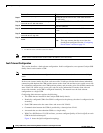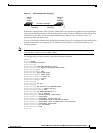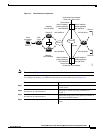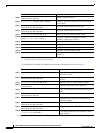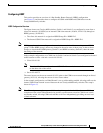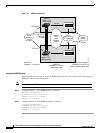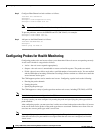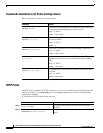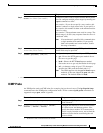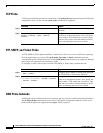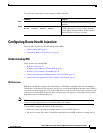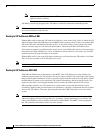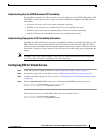
46
Catalyst 6000 Family Content Switching Module Installation and Configuration Note
78-11631-02 Rev. A0
Configuring Probes for Health Monitoring
Step 3 Configure EtherChannel on both switches as follows:
interface Port-channel100
switchport
switchport trunk encapsulation dot1q
switchport trunk allowed vlan 136
Note By default, all VLAN's are allowed on the port channel.
To prevent problems, remove the SERVER and FT CSM VLAN's, for example:
swtichport trunk remove vlan 71
switchport trunk remove vlan 272
Step 4 Add ports to the EtherChannel as follows:
interface FastEthernet3/25
switchport
channel-group 100 mode on
Configuring Probes for Health Monitoring
Configuring probes to the real servers allows you to determine if the real servers are operating correctly.
A real server’s health is categorized as follows:
• Active—the real server responds appropriately.
• Suspect—the real server is unreachable or returns an invalid response. The probes are retried.
• Failed—the real server fails to reply after a specified number of consecutive retries. You are notified
and the CSM adjusts incoming connections accordingly. Probes continue to a failed server until the
server becomes active again.
The CSM supports probes used to monitor real servers. Configuring a probe involves the following:
• Entering the probe submode
• Naming the probe
• Specifying the probe type
The CSM supports a variety of probe types that monitor real servers, including FTP, DNS, or HTTP.
Note By default, no probes are configured on the CSM.
To set up a probe, you must configure it by naming the probe and specifying the probe type while in
probe submode.
After configuring a probe, you must associate it with a server farm for the probe to take effect. All servers
in the server farm receive probes of the probe types that are associated with that server farm. You can
associate one or more probe types with a server farm.
Note Do not specify a port number when you configure a probe. The probe inherits the port number from
either the real server (if a port number was assigned when the real server was configured) or from the
virtual server.



